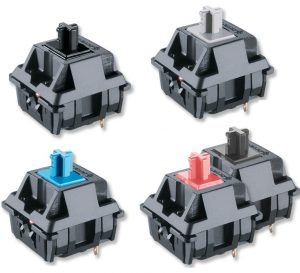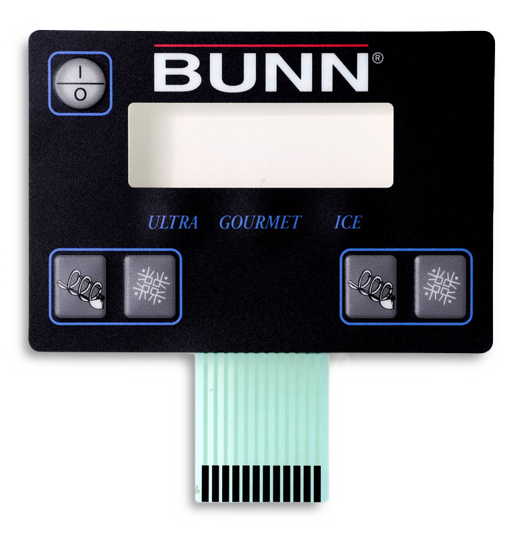The Ultimate Source on Membrane Changes: Style, Capability, and Applications
Membrane layer switches over work as an appealing intersection of layout and capability, playing a critical duty in modern individual interfaces across different sectors. This source unboxes the necessary parts that add to their performance, consisting of visuals overlays and circuit traces, while likewise illuminating the devices behind their pressure activation. As we check out the diverse applications of membrane buttons, it ends up being evident that their versatility and durability are critical in atmospheres varying from healthcare to consumer electronics. The subtleties of their layout and functional concepts may expose also deeper insights worth thinking about.

Comprehending Membrane Layer Buttons
Membrane layer switches are a kind of interface modern technology extensively used in numerous digital devices, characterized by their slim, versatile layout and performance. These buttons contain several layers that include graphic overlays, adhesive layers, and wiring, allowing a small and effective interface for customers. They can be found in home appliances, clinical devices, and industrial control board, providing a reputable method for individual communication.
Among the primary benefits of membrane switches is their capability to stand up to impurities such as dirt and moisture, making them suitable for environments where longevity is important. Their low-profile style enables smooth assimilation right into various applications, while the personalized visuals overlays boost customer experience by providing clear visual feedback. Furthermore, membrane layer switches can suit a variety of modern technologies, such as responsive feedback and backlighting, further boosting their functionality.
The production procedure for membrane layer changes generally includes display lamination, printing, and die-cutting techniques, making certain accuracy and uniformity in production. In general, membrane changes represent a effective and flexible option for modern-day electronic tools, integrating capability with visual appeal in user interface style.
Trick Components and Layout Elements
A selection of key parts and style components collaborated to create an efficient membrane button. At the core, the visuals overlay offers both useful and aesthetic functions, supplying an user-friendly interface while shielding interior elements from environmental factors. The option of products, generally polyester or polycarbonate, influences durability and tactile feedback.
Underneath the overlay, the sticky layer makes certain the switch sticks safely to the substratum, which can be plastic, metal, or glass. The spacer layer is essential, as it keeps the essential void between the circuit and the overlay layers, enabling efficient actuation. Membrane Switches. Circuit traces, typically made from conductive ink or adhesive, are published on an adaptable substratum, making it possible for electrical signals to be transferred when stress is applied
Design factors to consider also consist of the setup of responsive domes or embossing that offer physical comments to the user, improving the general experience. Additionally, the design and spacing of the switches have to be maximized for convenience of usage, guaranteeing that customers can browse the user interface intuitively. On the whole, these parts and design elements work synergistically to produce a dependable, practical membrane switch tailored to certain applications.
Functionality and Procedure System
At the heart of efficient functionality for membrane layer changes lies their operational device, which promotes customer communication through a basic yet efficient layout. These switches operate the principle of pressure activation, where a user applies pressure to a designated location of the button (Membrane Switches). This activity presses the layers of the switch, completing an electric circuit that sends a signal to the connected gadget
The building normally includes a leading visuals layer, a sticky spacer layer, and a bottom circuit layer, which collectively create a robust interface. When stress is applied, the leading layer falls down versus the lower circuit layer, enabling conductive traces to link. This style not just makes it possible for clear responsive responses informative post however also makes certain longevity and other reliability, as the buttons are often resistant to dirt and wetness.
Additionally, the versatility of membrane switches over permits integration with various technologies, consisting of LED indications and microcontrollers, improving their capability. By supplying a streamlined user interface that decreases mechanical wear, membrane changes continue to be a favored selection in applications ranging from consumer electronics to industrial equipment, making sure optimum performance and user fulfillment throughout diverse settings.
Kinds Of Membrane Layer Switches

An additional substantial category is illuminated membrane layer switches, which incorporate backlighting to enhance presence in low-light problems. These switches are usually made use of in control panels and control panels where clear visibility is crucial.
Additionally, there are personalized membrane layer changes designed to meet certain dimensional, graphical, and useful demands. These personalizations can consist of one-of-a-kind forms, colors, and formats, permitting for seamless assimilation into various gadgets.

Applications Across Various Industries
Exactly how do membrane layer buttons enhance functionality throughout varied sectors? In the medical sector, membrane layer buttons play a crucial role in gadgets such as analysis equipment and client monitoring systems, where dependability and convenience of cleaning are vital.
In the vehicle market, membrane switches are generally made use of in control panels and control panels, providing instinctive controls that improve vehicle driver security and ease. The consumer electronic devices sector likewise gains from their lightweight and adjustable functions, allowing smooth designs for smartphones and home devices.
In addition, membrane switches discover applications in commercial automation, where they contribute to reliable equipment procedure and monitoring systems. Their resistance to dust and dampness makes sure performance popular conditions (Membrane Switches). Furthermore, the food and drink market employs membrane buttons for tools control, where hygiene and durability are essential
Conclusion
In final thought, membrane switches stand for a vital advancement in customer interface innovation, identified by their unique style and capability. Their key components, consisting of visuals overlays and circuit traces, add to their functional effectiveness through pressure activation. The flexibility of membrane switches over promotes their application across diverse industries, from medical devices to consumer electronic devices. This comprehensive find more information understanding strengthens the significance of membrane layer buttons in improving product usability and resilience in contemporary technological environments.
Membrane layer switches over serve as an intriguing crossway of style and functionality, playing a critical function in modern customer interfaces throughout numerous markets.Membrane layer buttons are a kind of user interface innovation commonly used in numerous digital gadgets, characterized by their thin, adaptable layout and functionality.At the heart of effective capability for membrane changes lies their functional system, which promotes individual interaction via a simple yet efficient style. These buttons run on the concept of pressure activation, where a customer applies force to a marked area of the button.In verdict, membrane switches represent a crucial advancement in customer interface innovation, defined by their one-of-a-kind style and performance.